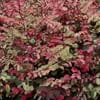Life Span
Perennial
Perennial
Origin
Hybrid origin, Southwestern United States
World/Pandemic, North America, Europe
Types
Not Available
Lustrous Creeping Red Fescue, Rubra trichophylla, Rubra rubra
Habitat
riparian zones, Semi desert, Upland
Wide range of ecological site
USDA Hardiness Zone
8-10
2-7
Sunset Zone
7, 8, 9, 10, 11, 12, 13, 14
A2, A3, 1a, 1b, 2a, 2b, 3a, 3b, 4, 5, 6, 7, 8, 9, 10, 14, 15, 16, 17, 18, 19, 20, 21, 22, 23, 24
Habit
Spreading
Mat-forming
Minimum Width
Not Available
Flower Color
White
Not Available
Flower Color Modifier
Not Available
Bicolor
Fruit Color
creamy white
Non Fruiting Plant
Leaf Color in Spring
Green
Dark Green
Leaf Color in Summer
Green
Light Green
Leaf Color in Fall
Green
Dark Green
Leaf Color in Winter
Green
Tan
Leaf Shape
Oblanceolate , Ovate
Grass like
Plant Season
Spring, Summer, Fall, Winter
Spring, Summer, Fall, Winter
Sunlight
Full Sun
Full Sun, Partial Sun, Partial shade
Type of Soil
Clay, Loam, Sand
Clay, Loam, Sand
The pH of Soil
Acidic, Neutral, Alkaline
Acidic, Neutral
Soil Drainage
Well drained
Average
Bloom Time
Spring
Early Summer, Summer, Late Summer
Tolerances
Drought, Dry soil, Heat Tolerance
Not Available
Where to Plant?
Ground, Pot
Ground
How to Plant?
Seedlings
From Rhizomes
Plant Maintenance
Medium
Medium
Watering Requirements
Needs very little water
Needs 2-3 times watering per week
In Summer
Lots of watering
Lots of watering
In Spring
Moderate
Moderate
In Winter
Average Water
Average Water
Soil pH
Acidic, Neutral, Alkaline
Acidic, Neutral
Soil Type
Clay, Loam, Sand
Clay, Loam, Sand
Soil Drainage Capacity
Well drained
Average
Sun Exposure
Full Sun
Full Sun, Partial Sun, Partial shade
Pruning
Cut back old stems to the ground, Remove damaged leaves, Remove dead branches, Remove dead leaves
Prune grass to maintain level
Fertilizers
can go long without fertilizers
fertilize in fall
Pests and Diseases
Pests and diseases free
Billbugs, Dollar spot, Pythium blight, Red blotch, Red thread, White grubs
Plant Tolerance
Dry Conditions, Dry soil, Heat And Humidity
Not Available
Flowers
Showy
Insignificant
Flower Petal Number
Single
Single
Foliage Texture
Fine
Fine
Foliage Sheen
Glossy
Matte
Attracts
Butterflies
Bugs
Aesthetic Uses
along a porch, deck or patio, Beautification, Ground Cover, Showy Purposes, Wild gardens
Ground Cover
Beauty Benefits
Not Available
Not Available
Environmental Uses
Air purification
Erosion control, Wildlife
Medicinal Uses
anti-inflammatory, Anti-oxidant, cholesterol-lowering
No Medicinal Use
Part of Plant Used
Twigs
Whole plant
Other Uses
Can be made into a herbal tea
Used as Ornamental plant
Used As Indoor Plant
No
No
Used As Outdoor Plant
Yes
Yes
Garden Design
Groundcover
Edging, Groundcover, Lawns and Turf, Mixed Border, Rock Garden / Wall
Botanical Name
BACCHARIS 'Centennial'
FESTUCA rubra
Common Name
desert broom , broom baccharis , greasewood
Red Fescue
In Hindi
desert broom
Red Fescue
In German
Wüste Besen
Rotschwingel
In French
desert broom
fétuque rouge
In Spanish
escoba del desierto
festuca roja
In Greek
desert broom
κόκκινο Φεστούκα
In Portuguese
vassoura do deserto
Red festuca
In Polish
desert broom
Kostrzewa czerwona
In Latin
desert broom
Red Fescue
Phylum
Magnoliophyta
Magnoliophyta
Class
Magnoliopsida
Liliopsida
Order
Asterales
Cyperales
Family
Asteraceae
Poaceae
Clade
Angiosperms, Asterids, Eudicots
Angiosperms, Commelinids, Monocots
Tribe
Astereae
Not Available
Subfamily
Not Available
Not Available
Number of Species
Not Available
Not Available
Season and Care of Desert Broom and Red Fescue
Season and care of Desert Broom and Red Fescue is important to know. While considering everything about Desert Broom and Red Fescue Care, growing season is an essential factor. Desert Broom season is Spring, Summer, Fall and Winter and Red Fescue season is Spring, Summer, Fall and Winter. The type of soil for Desert Broom is Clay, Loam, Sand and for Red Fescue is Clay, Loam, Sand while the PH of soil for Desert Broom is Acidic, Neutral, Alkaline and for Red Fescue is Acidic, Neutral.
Desert Broom and Red Fescue Physical Information
Desert Broom and Red Fescue physical information is very important for comparison. Desert Broom height is 60.00 cm and width 150.00 cm whereas Red Fescue height is 5.10 cm and width Not Available. The color specification of Desert Broom and Red Fescue are as follows:
Desert Broom flower color: White
Desert Broom leaf color: Green
Red Fescue flower color: Not Available
- Red Fescue leaf color: Dark Green
Care of Desert Broom and Red Fescue
Care of Desert Broom and Red Fescue include pruning, fertilizers, watering etc. Desert Broom pruning is done Cut back old stems to the ground, Remove damaged leaves, Remove dead branches and Remove dead leaves and Red Fescue pruning is done Prune grass to maintain level. In summer Desert Broom needs Lots of watering and in winter, it needs Average Water. Whereas, in summer Red Fescue needs Lots of watering and in winter, it needs Average Water.





